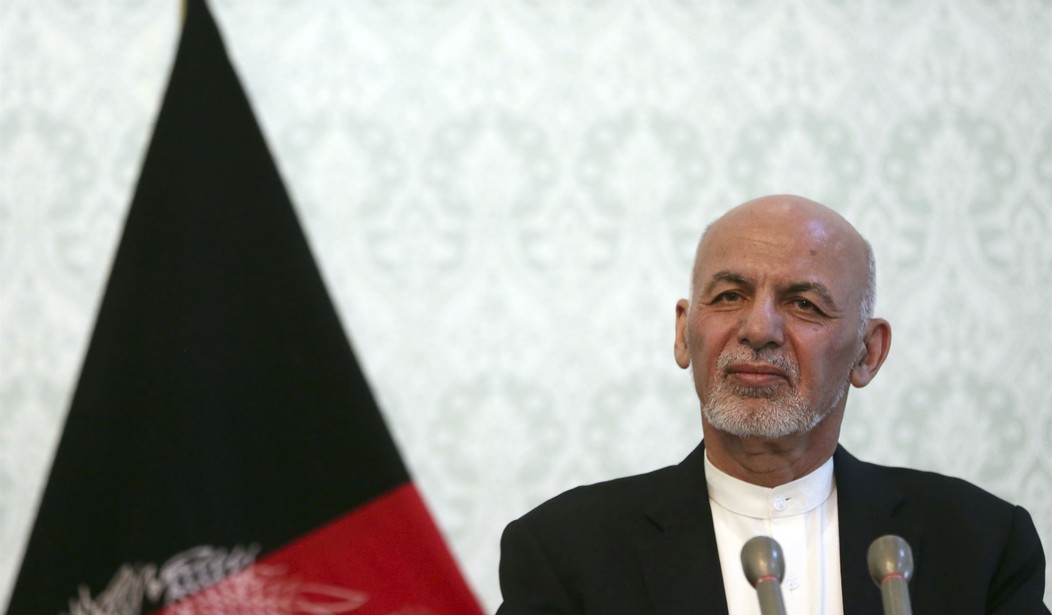How much of Afghanistan will remain Taliban-free once the United States military totally withdraws from the country?
The Wall Street Journal reports that every few hours this past weekend, “the Taliban released videos of triumphant insurgents inspecting yet another Afghan district headquarters that had been lost in battle by government forces or surrendered without a fight.” Apparently, most of the Taliban’s success has been in outlying, sparsely populated districts. The bulk of the Afghan army — 260,000 strong — remains around the major population centers.
How long can the Afghan national army hold off the Taliban? The army lacks equipment, training, and, most importantly, U.S. airpower. There are some crack special forces units, but for the most part the army melts away when the Taliban attacks.
Psychologically, the Afghan army may already be doomed.
Yet, the seemingly never-ending succession of battlefield setbacks that suddenly accelerated this weekend is beginning to create a perception of inevitability about a Taliban takeover. It is a perception that, unless quickly reversed, risks snowballing into a self-fulfilling prophecy, Afghan officials warn.
Nearly two dozen of Afghanistan’s 387 districts were taken over by the Taliban, mostly in northern Afghanistan, on Saturday and Sunday, adding to some 30 others seized by the insurgents across the country since early May, according to local reports. The Taliban have also reached the outskirts of several provincial capitals.
One of the problems is poor leadership — political and military. President Ashraf Ghani just recently named a new defense minister to replace a predecessor who had been convalescing in Abu Dhabi for several months. There’s a new chief of staff of the army and new Interior minister to run the police forces, which serve as adjuncts to the military.
Related: America Has a Moral Obligation to Save Afghans Who Worked Alongside Our Military
But the Taliban’s success is proving to be ridiculously easy.
Many of these districts have surrendered to the Taliban as a result of negotiations that involved local power-brokers and military commanders who figured they would get a better deal if they moved early. On some occasions, the Taliban even gave Afghan soldiers and policemen, many of whom have been unpaid for months, pocket money for a safe journey home.
“We will not surrender to terrorists. We will not surrender to ominous plans,” Ghani said at a Saturday ceremony introducing the new ministers. Ghani will meet with President Biden at the White House on Friday. No doubt Biden will tell the Afghan president to get his passport in order because he may have to make a quick exit.
Dr. Abdullah Abdullah, whose alliance makes up half the Afghan government, had to deny that the government had a secret deal with the Taliban to hand over districts one at a time.
One woman from the eastern Ghazni province recounted how she recently traveled to her home district, passing government checkpoints, just to find abandoned outposts and Taliban patrols on the way back. Dr. Abdullah, whose alliance accounts for half the Afghan government under a power-sharing deal with Mr. Ghani, was peppered with questions about whether some secret agreement exists to hand over district after district to the Taliban.
“I told categorically, with 1,000% assurance, no, that is not the plan, but the fact that people are thinking this way, this in itself gives you the picture,” Dr. Abdullah said in an interview after the meeting. “Perhaps the same thing goes in the mind of those soldiers who are defending the country. That in itself has consequences.”
Indeed, what does the Afghan military have to fight for? A weak, corrupt government whose power only extends a few miles beyond the capital, Kabul? It’s a nation run by warlords who are apparently changing their allegiance to the Taliban.
There just isn’t much of a government left to defend.










Join the conversation as a VIP Member